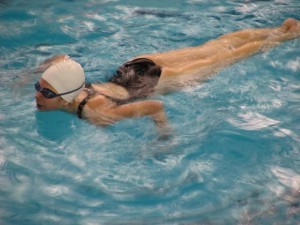 ARTSWIM 101: The Basics
ARTSWIM 101: The Basics
What skills are taught in Recreational and Pre-Competitive programs?
So you just enrolled your swimmer in synchro and you are not sure what to expect. Depending upon the age and swimming ability of your child, they will learn many different skills this season.
All swimmers learn how to “scull” which is a very important repetitive arm movement that is used to hold a position in the water – whether it be lying flat, or upside down. Swimmers will also learn one of several basic position holds from which most “moves” are made.
For example, one important position is the “back layout” whereby swimmers learn to lie completely flat in the water while sculling in place. To some, it may look like just a “back float”, however it is much more complex than that. Swimmers must tighten their “core muscles” to achieve a perfectly flat position that keeps the toes and knees and stomach right at the surface of the water while the head is looking straight up and ears are underwater. It is from the “back layout” that secondary leg movements are executed – such as the ballet leg – whereby one leg is straightened out of the water overhead. The position of “front layout” is pictured above. It is similar to the back layout, but the swimmer is on their stomach. It is from here that they will pull down into the water to go into an upside-down position.
Much like dance, swimmers will also learn to count to music as part of a choreographed routine. They will learn how to synchronize their movements with the rest of the team in “counts of eight”.
It takes time to acquire all the skills necessary to do an artistic swimming routine. However, most swimmers would agree that the fun and camaraderie of being on a team with others who absolutely love the water is well worth the work!

